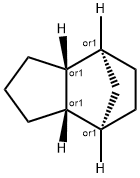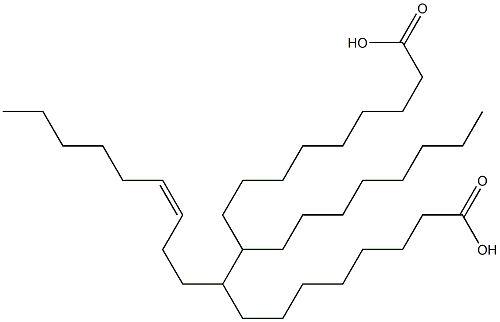Dicyclopentadiene , 96%, Endo+EXO, containing 0.03%BHT stabilizer , 77-73-6
Synonym(s):
4,7-Methano-3a,4,7,7a-tetrahydroindene;Cyclopentadiene dimer;Cyclopentadiene dimer, 4,7-Methano-3a,4,7,7a-tetrahydroindene;DCPD;Dicyclopentadiene
CAS NO.:77-73-6
Empirical Formula: C10H12
Molecular Weight: 132.2
MDL number: MFCD00078246
EINECS: 201-052-9
PRODUCT Properties
| Melting point: | 33 °C(lit.) |
| Boiling point: | 170 °C(lit.) |
| Density | 0.986 g/mL at 25 °C(lit.) |
| vapor pressure | 3 hPa (20 °C) |
| refractive index | n |
| Flash point: | 114 °F |
| storage temp. | Store below +30°C. |
| solubility | Chloroform (Slightly), Methanol (Slightly) |
| form | Liquid |
| Specific Gravity | 0.968 |
| color | Clear |
| Odor | Camphor-like. |
| explosive limit | 0.8-6.3%(V) |
| Water Solubility | Immiscible with water. |
| FreezingPoint | 31.5℃ |
| Hydrolytic Sensitivity | 4: no reaction with water under neutral conditions |
| Merck | 14,2739 |
| BRN | 1904092 |
| Dielectric constant | 2.4900000000000002 |
| Exposure limits | ACGIH: TWA 0.5 ppm; STEL 1 ppm NIOSH: TWA 5 ppm(30 mg/m3) |
| Stability: | Stable at room temperature, but may form explosive peroxides if stored in contact with air. Incompatible with oxidizing agents. Decomposes on heating. Flammable. Mixtures of the vapour with air are explosive. |
| InChIKey | HECLRDQVFMWTQS-UHFFFAOYSA-N |
| LogP | 3.300 (est) |
| CAS DataBase Reference | 77-73-6(CAS DataBase Reference) |
| NIST Chemistry Reference | 4,7-Methano-1H-indene, 3a,4,7,7a-tetrahydro-(77-73-6) |
| EPA Substance Registry System | Dicyclopentadiene (77-73-6) |
Description and Uses
Cyclopentadiene is a crystalline solid or a liquid (above 32℃) with a disagreeable, camphor-like odor.The odor threshold is 0.011 (detectable); 0.020 ppm (recog_x005fnizable). Molecular weight=132.22; Boilingpoint=decomposes at 172.2℃; Freezing/Melting point 532℃; Vapor pressure=1.4 mmHg at 20℃; Flash point =32℃; Autoignition temperature=503℃. HazardIdentification (based on NFPA-704 M Rating System):Health 1, Flammability 3, Reactivity 1. Explosive limits:LEL=0.8; UEL=6.3. Practically insoluble in water;solubility=0.02%.
Dicyclopentadiene has attracted attention as a building block for the production of modified hydrocarbon resins, which show increased reactivity in copolymerizations with drying oils and produce paint resins with improved drying rate, gloss, and hardness. dicyclopentadiene is used in the modification of tung oil, linseed oil, soybean oil, fish oil, etc., which can speed up drying and improve water resistance and alkali resistance.
Safety
| Symbol(GHS) |    GHS02,GHS06,GHS09 |
| Signal word | Danger |
| Hazard statements | H225-H302-H315-H319-H330-H335-H410 |
| Precautionary statements | P210-P273-P301+P312-P303+P361+P353-P304+P340+P310-P305+P351+P338 |
| Hazard Codes | F,Xn,N,T |
| Risk Statements | 11-20/22-36/37/38-51/53-23-22-10 |
| Safety Statements | 36/37-61-45-26 |
| OEB | A |
| OEL | TWA: 5 ppm (30 mg/m3) |
| RIDADR | UN 2048 3/PG 3 |
| WGK Germany | 3 |
| RTECS | PC1050000 |
| Autoignition Temperature | 503 °C |
| TSCA | Yes |
| HazardClass | 3 |
| PackingGroup | III |
| HS Code | 29021990 |
| Hazardous Substances Data | 77-73-6(Hazardous Substances Data) |
| Toxicity | LD50 orally in Rabbit: 353 mg/kg LD50 dermal Rabbit 4940 mg/kg |






